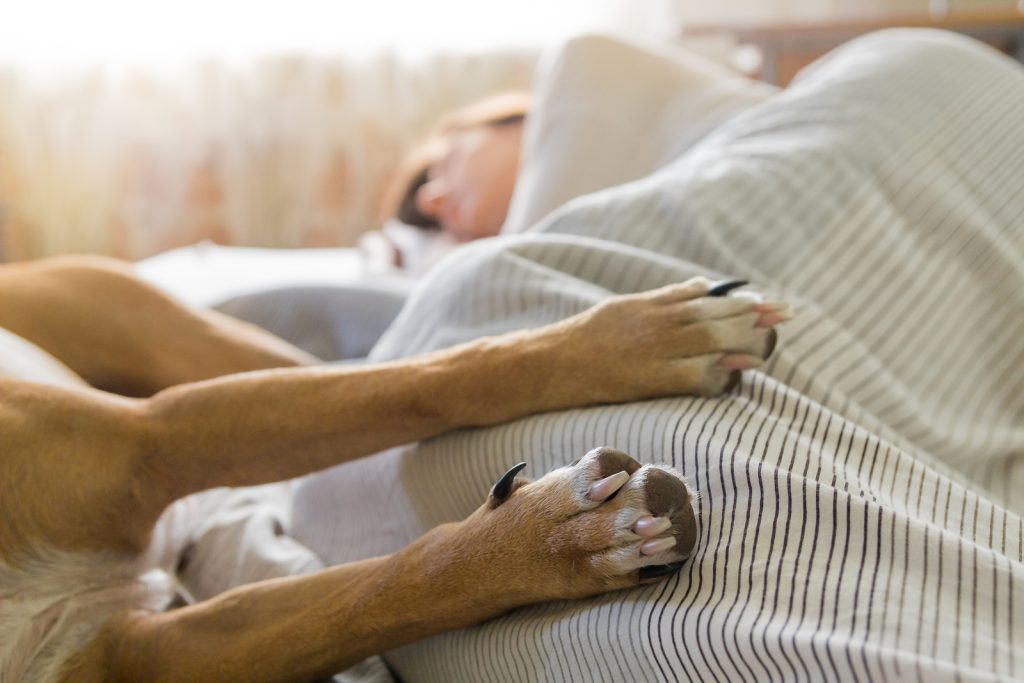- Make It Yourself Lavender Heart-Shaped Bath Bombs!
- 20 Things You Never Knew About “Down There”
- 12 Best Foods For Those Suffering From Arthritis Pain
- 12 Personal Hygiene Mistakes Almost Everyone Makes (Mom Never Told You About #4!)
- 15 Medicinal Plants And Herbs From The Cherokee People
- 12 Mind-Blowing Benefits Of Drinking Coconut Water During Pregnancy
- 12 Outstanding Winter Foods That Won’t Fatten You Up Like A Christmas Turkey
Special Dogs Are Helping To Sniff Out Cancer

Photo credit: bigstock.com
There are many methods for diagnosing cancer, many of which are complicated and expensive, and differ depending on the area of the body that’s being tested. But what if there was a way to detect cancer that was non-invasive and offered much earlier detection? Scientists believe they may have found a way to do just that, with a little help from man’s best friend.
The Power of a Dog’s Nose
Many anthropologists and historians believe that the wolf was the first animal to be tamed by humans. These wolves were bred in different ways over the millennia and evolved into the many breeds of domestic dogs we recognize today. But this raises a question: Why were dogs domesticated in the first place?
The main reason may have been a practical one. Dogs have an incredibly powerful sense of smell. This made them indispensable companions when early humans hunted for food. Dogs could track a scent much better than a person. They could lead their masters toward some amazing targets, and even assist in the actual takedown of prey. Even after humans embraced agriculture and began living in permanent settlements, they continued to take advantage of dogs’ powerful noses.
In addition to hunting, today dogs are used by police to sniff out bombs and track down missing persons. There are many ways that a dog’s sense of smell can be put to good use, but it wasn’t until the late 1980s that it occurred to anyone to use it for medical purposes.
Continue to Page 2

Photo credit: bigstock.com
Sniffing Out Disease
In 1989, doctors at King’s College in London, England, shared a report about a case of cancer that had been detected by a dog. A woman had noticed her dog continuously sniffing a mole that had appeared on her leg. She went to get the mole examined, and it turned out to be malignant case of melanoma. It was an early-stage case, and had her dog not brought it to her attention, it’s quite likely the disease would have become much more advanced before she thought to have a doctor look at it.
In another case, a woman noticed her dog kept sniffing her breast. It turned out she had a tumor growing deep in the breast tissue, and her dog somehow detected its presence before anyone else. This was another case where if the tumor had grown to the point where she could feel it herself, the disease might have been a lot more serious.
How exactly were the dogs able to do this? How is it possible for an animal to detect a disease even before doctors can?
As we’ve already established, a dog’s sense of smell is much more powerful than a human’s, but most people don’t understand just how much more powerful it is. A human nose has about 5 million sensors which transmit signals to the brain for interpretation. A dog, however, has around 300 million. Dogs also have an additional “second nose” in the back of their nose called the vomeronasal organ, also known as Jacobson’s Organ, which further amplifies their sense of smell.
Using their super-powered smelling abilities, dogs are thought to be able to pick up on unique odors produced by cancer cells, called “volatile organic compounds.” A human nose could never detect them, but science has shown that a dog can pick up on these subtle compounds even if the tumor is deep inside a human’s body.
When the story of a cancer-sniffing dog in England first broke, it immediately sparked interest in the medical community, and further studies were conducted in the United Kingdom, Italy, France, and the United States that confirmed that the dogs were accurately detecting instances of cancer.
Some of these experiments were highly sophisticated, involving the use of bandages and urine samples from cancer patients, as well as healthy volunteers to act as controls. Researchers expected the dogs to be able to successfully detect cancer in some samples, but they were amazed by how accurate the dogs’ skills turned out to be.
In one experiment by an organization called Project Kdog, a pair of specially trained German Shepherds were able to detect bandages used on breast cancer patients with an impressive 91 percent success rate in the first round of testing. In the second round, they correctly identified the bandages 100 percent of the time! In other studies, test dogs had 99 percent success rates for identifying urine samples from men with prostate cancer.
READ ALSO: Does Aspartame Cause Cancer? This Information Could Save Your Life Video
Scientists hope to use cancer-sniffing dogs not as a replacement, but as an addition to conventional diagnostic tools. This is an exciting and encouraging development for cancer screening and diagnosis, as it offers the ability to catch cases of cancer earlier and increase the likelihood of survival.
References:

































